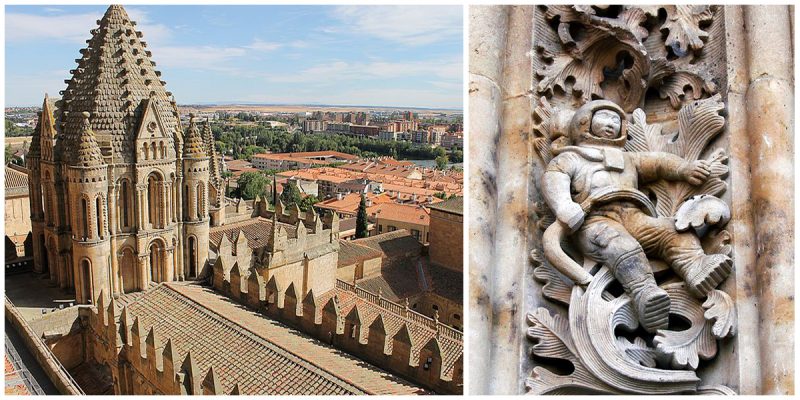Situated on the banks of the River Tormes, the ancient Spanish city of Salamanca is one of the oldest university towns in Europe, with a rich collection of Renaissance, Roman, Gothic, and Baroque monuments.
Among them are two impressive cathedrals, the Old Cathedral and the New Cathedral.
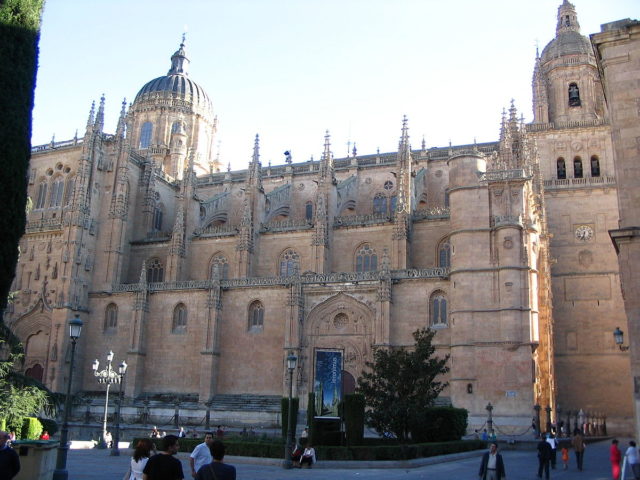
The Old Cathedral, constructed at the end of the 12th century, is in the Romanesque style with the outstanding Gallo Tower, and it is dedicated to Saint Mary of the Sea. It is closed to the public and only opened during very special occasions.
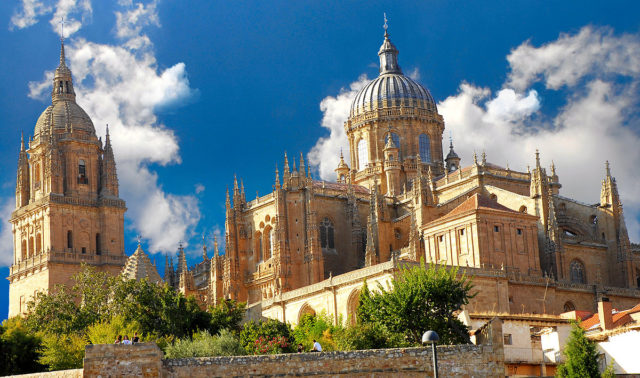
After in the beginning of the 15th century, it was decided that Salamanca needed a bigger and more splendorous cathedral. The result was The New Cathedral, constructed between the 16th and 18th centuries in the Gothic and Baroque styles, commissioned by Ferdinand V of Castile of Spain, the Catholic King.
It is one of the ultimate manifestations of Gothic architecture and one of the last examples constructed in Spain.
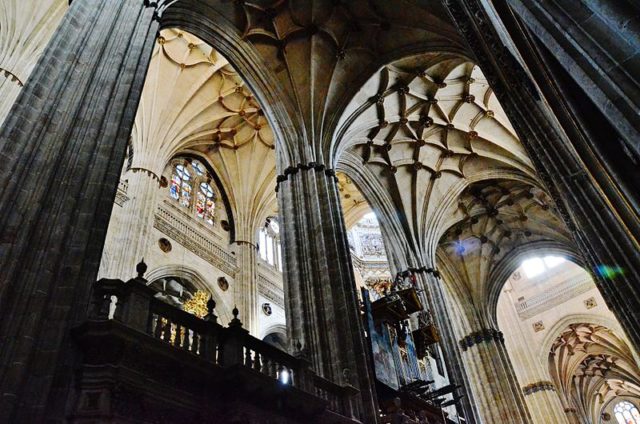
Its main entrance consists of three richly decorated arcs, each leading to the three naves (sections) of the church. The interior is notable for its fine vaulting, delicate cornices, and slender pillars. The cathedral’s vaulted stone ceilings contain graceful paintings and its sandstone walls are intricately carved.
What is interesting about this cathedral is that among the ornate carvings on the façade are those of a faun eating an ice cream, a lynx, a bull, a crayfish, and an astronaut (complete with boots, helmet, and breathing apparatus on his back with tubes attached to the front of his suit).
Photographs of this astronaut figure have been circulating online via email, forums and blogs for years now, generating a considerable amount of debate.
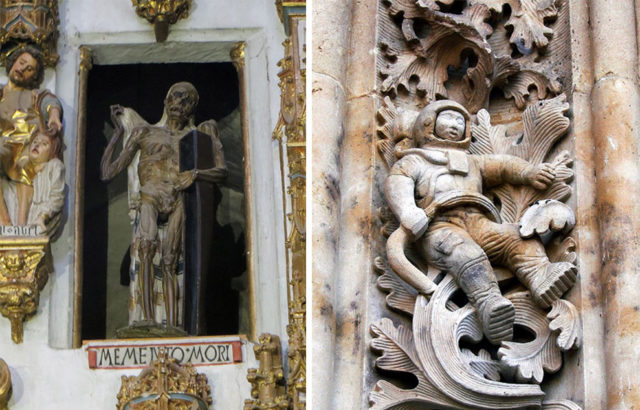
However, the origins of the carving are neither ancient nor mysterious. The contemporary symbols were added in 1992 during restoration work on the cathedral, when one of the artisans engaged in the project chose to carve strange figures into the stone, as a way of signing their works.
The symbol was added by stonemason Miguel Romero under the supervision of Jeronimo Garcia, the person responsible for the restoration, who reportedly chose an astronaut as a fitting symbol of the twentieth century.
Cathedrals required constant maintenance and restorations, and even today, new construction goes on.
